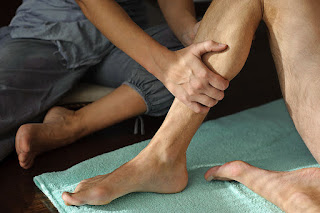EXERCISE IN THE MANAGEMENT OF CHRONIC BACK PAIN
Chronic back pain is a common medical condition. It’s a leading reason for respiratory problems. It’s also a leading cause ofrestrictedmovement, reduced mental focus, and depression. According to the National Institute of Health (NIH), chronic back pain is one of the most expensive medical conditionsfacingtoday’s population, with an annual estimated cost of $100 billion in the US alone.
Possible Reasons for Chronic Back Pain
Despite eons of related scientific research, chronic back pain remains misunderstood. This makes it one of the most difficult medical conditions to treat. According to the NIH, health professionals play a part in the lack of understanding by sharing very little information about the pain in common language. Some cases are however traced to spinal injuries that have long since healed.
While some cases are attributed to nerve damage, arthritisespecially osteoarthritis, fibromyalgia,headache, shingles and multiple sclerosis, other cases have no apparent cause, with no prior injury nor underlying tissue damage. In most cases, costly medical diagnostics are often performed that do little to inform precise treatment. That exercise has been an option is however not a new idea.
History of Exercise in U.S Medical Care
a) 18th C and Before
Hippocrates and Claudius Galen are believed to have been the first physicians. They advocated for the adoption of physical therapeutic practices such as massage, hydrotherapy, and aerobics. The latter was famous for his “six things non-natural” phenomenon, which included proper exercise as a significant part of care. In the 18th C an orthopedic machine (Gymnasticon) was developed.
In 19th C, physical therapy(exercise) was considered an essential part of medical practice. Before then Western Medical Healthcare Systems reportedly focused more on “sickness and disease”. It didn’t go into the depths of causes (physical in nature) for the various “sicknesses and diseases.”
b) 19th C and Current
Later in 1960, the American healthcare system changed its focus to overall well-being whereby smoking, excessive consumption of alcohol, and heart problems among other related conditions were seen as deterrents of good health. Exercise then became an emphasized practice of the US system as the latter began to find a balance within the tradition of “disease management and rest.”
Today, exercise is recognized for its significance in a healthy lifestyle, longevity, quality of life, mental health, and the management of many other chronic diseases, including chronic back pain.Exercise is the only meaningful way to increase functional capacity.Questions about exercise often probe its place, that is, alone or in combination with cognitive or biopsychosocial strategies.
Exercise as a Primary Therapeutic Care
Other than chronic back pain, there’s acute low back pain. Early diagnosis calls for physical therapy (exercise) as a primary health care. Unfortunately, a large percentage of primary care physicians don’t recommend exercise forthe patients. The reasons why, other than lack of time, areusually not good enough. Some of the physicians claim patient interests override their clinical judgment.
This is despite the fact that they’re very much aware of the essence of recommending increased activity. You would argue the patient-practitioner conflict suggests a need for better methods of communicating the value of being active. You would also blame the physicians for lack of tact because some practitioners align various physical therapies with their patients’own motivations.
Benefits of Exercise in Back Pain Care
Back to chronic back pains, there is a growing body of scientific evidence supporting the use of exercise-directed therapy for patients with the condition. When compared with other therapeutic practices, it has often shown positive results by itself and in combination with other care tactics, particularly cognitive interventions such as yoga. It is also cost effective in reducing disability.
A typical exercise program for chronic back pain should be able to increase function, reduce pain, and prevent further recurrence. A well thought-out exercise program for chronic back pain should also contain the following four elements: 1. A pragmatic framework, 2. A standardized assessment and treatment methodology, 3. A commontherapeuticprotocol, and 4. A cost effective care model.
Pragmatic Exercise Program for Back Pain
In a pragmatic physical framework, exercise should follow the principle of progressive overload, which generallyimplies enhanced intensity, frequency, or duration of movement to exceed normal activity levels.This framework contains numerous result-oriented protocols under the construct of progressive overload that apply well to the physical treatment for increasing spinal function.
According to the US Bureau of Labor Statistics (BLS), only an estimated 13%-20% of people over the age of 15 participate in regular lifestyle physical activity, with variations based on where one comes from. Chronic back pain patients are generally less physically active. What it means is that the patients come to therapywith very low physical abilities from a lifestyle characterized by pain.
Strength Exercise Program for Back Pain
The goal however of pragmatic exercise program for chronic back pain is to return the patients to theirnormaldaily activities, which includes; sitting, rising, bending, twisting, lifting, walking, and climbingby enhancing strength, flexibility, endurance, and balance. Resistance (strength) training has been identified as the type of exercise for chronic back pain that results in the above elements.
Strength training is safe, efficient, and easy to quantify. It has been shown to reduce depression, kinesiophobia,vertebral fracturesand recidivism.Resistance training also increases the integrity of connective tissue within the muscles, joint cartilage, tendons, and ligaments. Because of its multifactorial contribution to overall health, strength training should be part of the care program.
In summary, exercise is an important technique in the management of chronic back pain. This is regardless of whether pain is acute or chronic. Among the different exercise methods often used, strength training is the most efficient. Without a pragmatic framework however, healing may not be quantified for objective enhancement. It would be difficult also to predict its impact on the patient.
Finally, remember that not all back pain is the same. Some, identified as red flag, should not be treated with exercise and requires a much more careful medical approach.You may have noticed already, this is the home of informative pieces onpain treatment and wellness. Please keep it Iache.
Possible Reasons for Chronic Back Pain
Despite eons of related scientific research, chronic back pain remains misunderstood. This makes it one of the most difficult medical conditions to treat. According to the NIH, health professionals play a part in the lack of understanding by sharing very little information about the pain in common language. Some cases are however traced to spinal injuries that have long since healed.
While some cases are attributed to nerve damage, arthritisespecially osteoarthritis, fibromyalgia,headache, shingles and multiple sclerosis, other cases have no apparent cause, with no prior injury nor underlying tissue damage. In most cases, costly medical diagnostics are often performed that do little to inform precise treatment. That exercise has been an option is however not a new idea.
History of Exercise in U.S Medical Care
a) 18th C and Before
Hippocrates and Claudius Galen are believed to have been the first physicians. They advocated for the adoption of physical therapeutic practices such as massage, hydrotherapy, and aerobics. The latter was famous for his “six things non-natural” phenomenon, which included proper exercise as a significant part of care. In the 18th C an orthopedic machine (Gymnasticon) was developed.
In 19th C, physical therapy(exercise) was considered an essential part of medical practice. Before then Western Medical Healthcare Systems reportedly focused more on “sickness and disease”. It didn’t go into the depths of causes (physical in nature) for the various “sicknesses and diseases.”
b) 19th C and Current
Later in 1960, the American healthcare system changed its focus to overall well-being whereby smoking, excessive consumption of alcohol, and heart problems among other related conditions were seen as deterrents of good health. Exercise then became an emphasized practice of the US system as the latter began to find a balance within the tradition of “disease management and rest.”
Today, exercise is recognized for its significance in a healthy lifestyle, longevity, quality of life, mental health, and the management of many other chronic diseases, including chronic back pain.Exercise is the only meaningful way to increase functional capacity.Questions about exercise often probe its place, that is, alone or in combination with cognitive or biopsychosocial strategies.
Exercise as a Primary Therapeutic Care
Other than chronic back pain, there’s acute low back pain. Early diagnosis calls for physical therapy (exercise) as a primary health care. Unfortunately, a large percentage of primary care physicians don’t recommend exercise forthe patients. The reasons why, other than lack of time, areusually not good enough. Some of the physicians claim patient interests override their clinical judgment.
This is despite the fact that they’re very much aware of the essence of recommending increased activity. You would argue the patient-practitioner conflict suggests a need for better methods of communicating the value of being active. You would also blame the physicians for lack of tact because some practitioners align various physical therapies with their patients’own motivations.
Benefits of Exercise in Back Pain Care
Back to chronic back pains, there is a growing body of scientific evidence supporting the use of exercise-directed therapy for patients with the condition. When compared with other therapeutic practices, it has often shown positive results by itself and in combination with other care tactics, particularly cognitive interventions such as yoga. It is also cost effective in reducing disability.
A typical exercise program for chronic back pain should be able to increase function, reduce pain, and prevent further recurrence. A well thought-out exercise program for chronic back pain should also contain the following four elements: 1. A pragmatic framework, 2. A standardized assessment and treatment methodology, 3. A commontherapeuticprotocol, and 4. A cost effective care model.
Pragmatic Exercise Program for Back Pain
In a pragmatic physical framework, exercise should follow the principle of progressive overload, which generallyimplies enhanced intensity, frequency, or duration of movement to exceed normal activity levels.This framework contains numerous result-oriented protocols under the construct of progressive overload that apply well to the physical treatment for increasing spinal function.
According to the US Bureau of Labor Statistics (BLS), only an estimated 13%-20% of people over the age of 15 participate in regular lifestyle physical activity, with variations based on where one comes from. Chronic back pain patients are generally less physically active. What it means is that the patients come to therapywith very low physical abilities from a lifestyle characterized by pain.
Strength Exercise Program for Back Pain
The goal however of pragmatic exercise program for chronic back pain is to return the patients to theirnormaldaily activities, which includes; sitting, rising, bending, twisting, lifting, walking, and climbingby enhancing strength, flexibility, endurance, and balance. Resistance (strength) training has been identified as the type of exercise for chronic back pain that results in the above elements.
Strength training is safe, efficient, and easy to quantify. It has been shown to reduce depression, kinesiophobia,vertebral fracturesand recidivism.Resistance training also increases the integrity of connective tissue within the muscles, joint cartilage, tendons, and ligaments. Because of its multifactorial contribution to overall health, strength training should be part of the care program.
In summary, exercise is an important technique in the management of chronic back pain. This is regardless of whether pain is acute or chronic. Among the different exercise methods often used, strength training is the most efficient. Without a pragmatic framework however, healing may not be quantified for objective enhancement. It would be difficult also to predict its impact on the patient.
Finally, remember that not all back pain is the same. Some, identified as red flag, should not be treated with exercise and requires a much more careful medical approach.You may have noticed already, this is the home of informative pieces onpain treatment and wellness. Please keep it Iache.



Comments
Post a Comment